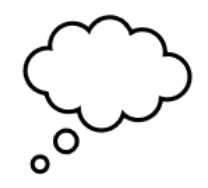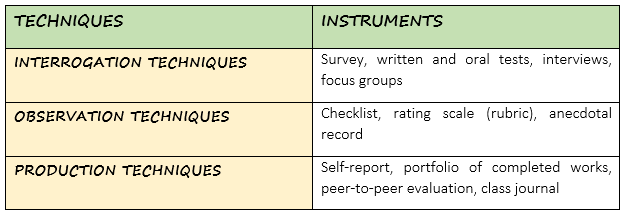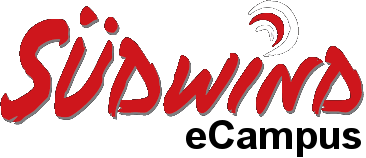Szekció vázlat
-
Welcome to the sixth module.
In this module you will
- find out how to assess the inclusiveness of your lesson plans
- get to know some inclusion elements (variables) and their progression levels (rubrics)
- share your experience regarding the evaluation
- learn techniques and instruments to collect evidence
-
This module will focus on how to assess whether or not lesson plans are inclusive. But what kind of evaluation and what kind of inclusion are we talking about?
It is common to think of evaluation as something that will be done at the end of the activity, so we only think about evaluation when we are finishing the activity, and then we realise that we have lost the opportunity to collect information throughout all the tasks were being carried out and also realise that we were focussing on actvities that do not provide us with the information we need to assess the objectives set.
For this reason, our proposal raises the planning of the intervention based on the indicators that will help us to evaluate the teaching unit.
When we define what we want to achieve (objectives) regarding our educational intervention, we will also have to think about what we are going to watch to assess whether we have achieved it (variables and indicators), how we can promote situations in which performance is generated (activities) and how we are going to collect that information (techniques and instruments).
Regarding inclusion, this goes beyond the adaptation of our lessons to issues such as disability, cultural diversity, language or the social background of our students, since that would only be accessibility. Accessibility is fundamental, it is the first step towards inclusion, but to talk about inclusion we need to go further, we need to make the lessons attractive and motivating for ALL students, in order to engage them in the learning process. Only then we can say that our lessons are inclusive. From this perspective we address inclusion and intend to provide a new resource and good practices to the European Toolkit for Schools [1].
This is the complete table of variables and progression levels:
VARIABLE/ELEMENTS OF INCLUSION
PROGRESSION LEVEL 1
PROGRESSION LEVEL 2
PROGRESSION LEVEL 3
COOPERATION
The lesson plan promotes interactions between students
The lesson plan includes division of tasks among students to make a common final product
The lesson plan promotes students´ self-organization to make a common final product
RESPECT OF STUDENTS’S CAPACITY
The lesson plan considers different learning objectives adapted to the students’ capacities
The lesson plan is designed after knowing the students’ starting level and after agreeing with them their learning objectives
The lesson plan allows students display their diverse capacities (artistic, mathematic, empathic...) and reaches the agreed learning objectives
SELF-ESTEEM – SELF CONFIDENCE
The lesson plan allows teachers to show to their students their values, capacities and potentialities
The lesson plan allows students to discover their own values, capacities and potentialities
The lesson plan allows students to develop new values, capacities and potentialities
GIVING VALUE TO STUDENTS’S WORK
The lesson plan includes the elaboration of a final product by students
The lesson plan promotes the elaboration of a final product by students to be disseminated inside the school
The lesson plan promotes the elaboration of a final product by students to be used by teachers or other people (service- learning)
PROMOTING THE EMOTIONAL INVOLVEMENT OF STUDENTS
The lesson plan includes theoretical information about emotions or may provoke emotions but there is no reflection about them
The lesson plan promotes the recognition of one´s own emotions and how to accept and manage them
The lesson plan promotes the recognition of one´s own emotions and those of others
CREATIVITY IN PROBLEM SOLVING
The lesson plan gives students theoretical information about problem solving
The lesson plan shows students good practices related to problem solving
The lesson plan makes students solve real problems by themselves
AUTONOMY
The lesson plan provides the students flexibility to work at their own rhythm
The lesson plan provides the students flexibility to work at their own rhythm and gives them tools to organize their work themselves
The lesson plan provides the students flexibility to work at their own rhythm and gives them tools to organize their work themselves and includes mechanisms to follow up their work
ADAPTATION TO STUDENTS’S NEEDS
The lesson plan is based on students´ needs diagnosed by the teacher
The lesson plan is defined by students and teacher together, based on students’ needs
The lesson plan is proposed, implemented and evaluated by students and based on their own needs
Once this is done, the teachers have to include activities in their lesson plans that allow them to reach the chosen level of progression. That is why it is essential to select the variables and the progression level in the design phase of the lesson plan. In this way, we can choose the right activities to succeed in what we want to achieve.
Reflection
Can you think of any other variables, which are important for inclusiveness, that migth be missing?
Before choosing the progression level, the teachers have to verify where the students are with respect to that variable. Because if you choose level 3 when your students have not even reached level 1 this level will be difficult to achieve, but if the opposite happens, which means that the objective of the lesson plan is to reach level 2 when the real level of the students is set to level 3, there will be no new learning. Let's explain it with an example: a teacher wants to make their lesson inclusive through the variable promoting the emotional involvement of students:
Variable
Progression level 1
Progression level 2
Progression level 3
Promoting the emotional involvement of students
The lesson plan includes theoretical information about emotions or may provoke emotions but there is no reflection phase
The lesson plan promotes the recognition of one's own emotions and how to accept and manage them
The lesson plan promotes the recognition of one's own emotions and those of others
But this teacher doesn't know if their students already recognise and accept their own emotions or not yet. If they don't recognize and accept them yet, the chosen progression level should be 1 or 2, but if they already recognize and accept their own emotions, you'll need to aim for level 3. To find out whether or not your students recognize their own emotions you will have to perform a previous activity (or several), and the result of that activity will tell you which level to choose.An example of previous activity related to this could be some role play related to close and not so close situations (a teenager who has just had his heart broken, a Syrian teenager who has just arrived in your country with his family, a woman who has just lost her job…) to see how the students react.
It may also happen that, although our objective is to reach level 2, the actual level reached by the students is 3. For this reason, when evaluating the inclusion of the lesson plan, it is important to indicate what the final level of progression achieved has been.
To make sure our evaluation is solid, it is necessary to collect evidence. Therefore, it is necessary to explain what activities have been carried out in relation to the variable, which evidence and how it has been collected. In other words, it is at this precise moment when the activities must be designed and not before. Thus, you can design activities that allow you to collect the information you want to obtain.
It is not easy to collect evidence related to, for example, the recognition of one's own emotions. This is not something that can be done with an exam, rather we need other types of instruments. In the following table we collect some of them classified according to the technique used:

The choice of one instrument or another will depend on several factors such as the nature of the activity, the time available or the type of information to be obtained.
With the information obtained, we will be able to assess whether we have reached the level we intended to reach in the rubric and whether, therefore, our lesson plan is inclusive or not.
Going back to the example of the previous activity (role play of emotions), to find out if the students recognize their own emotions and/or those of others, the most important thing is the analysis of their speeches, that's why we can use interrogation techniques (asking students after each role play how they think their characters feel) and observation techniques (writing down in an anecdotal record the body language and attitude of students when asked about emotions). We can even record the scenes so you can keep an eye on the reactions of all the students.
Finally, designing lessons from this perspective will make you reflect on your own practice and therefore help you to be a better teacher
-
Congratulations!
You have now finished the "Strengthening Digital Readiness" course and hopefully gathered inspiration and ideas for your own teaching practice.
Task 6:
Hopefully, you already have many ideas about how to make your lessons inclusive. Your final task now is to create a lesson in which you incorporate what you have learned. For example, on topics of digital and media literacy or global citizenship. The most important thing is that the lesson is inclusive. You can check this with the variables from Module 6.
You should use the Lesson Plan Creator to publish your lesson plan on the DigiEdu4All platform.
For that you must register for a free account, then go to Lesson Plan Creator.We hope you have fun creating it.
-
